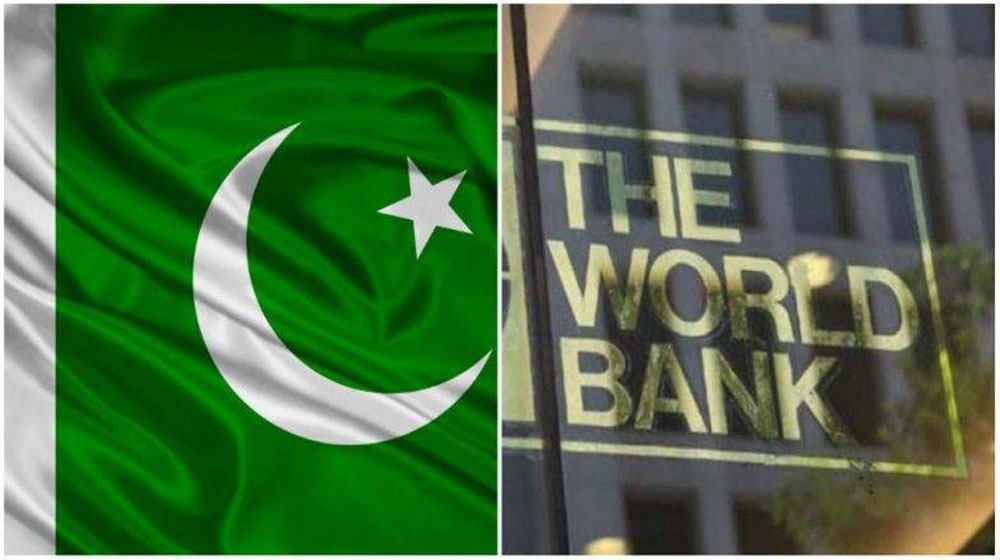The government has submitted the “Digital Economy Enhancement Project” to the World Bank, seeking $225 million to strengthen digital connectivity as a key foundation for digital economy development and enhance the government’s capacity for the digitally-enabled public services delivery.
The proposed project, to be financed by the loan from the International Development Association (IDA), will focus on critical digital infrastructure, platforms, and supporting regulations for digital services. The implementing agency of the project will be the Ministry of Information.
Technology and Telecommunication.
The proposed project forms part of the World Bank’s consolidated assistance program to Pakistan in the wake of the COVID-19 pandemic. It will build an enabling environment to leverage digital technologies, accelerate economic recovery and enhance service delivery, particularly to vulnerable groups. It will promote alignment and coordination amongst the private sector and provincial and federal governments; to bridge the digital divide and help Pakistan build resilience in the face of socioeconomic and technological disruptions.
Among other impacts, the pandemic has highlighted inequalities in Internet access, affordability, and usage across the country. Digitalization of services—from telehealth to online education to cashless transfers—is emerging as crucial to the country’s response and building resilience. Without access to reliable connectivity and devices, millions of Pakistanis risk being further cut off from vital information on health and safety, online learning, and the opportunity to voice their views and engage in commerce.
Inequalities may worsen because disadvantaged groups and people living outside major urban areas have more limited Internet access. Further, the disparity between men and women in their educational attainment, labor force participation, wages, and access to financial services may increase where there is a gender gap in access to the Internet.
The project documents noted that digital literacy is still limited, particularly in lower-income and rural communities. Women and girls especially are being increasingly excluded by the growing dangers of harassment, blackmail, and other types of digital violence. Studies show that women are 37 percent less likely to own a mobile phone and 40 percent less likely to access the internet than their male counterparts. Moreover, broader (digital) literacy is limited, constraining demand.
Less than 40 percent of Pakistanis report knowing what the internet is, and among internet users, only 11 percent have used e-commerce platforms. This lack of awareness is also constricting the broader uptake of digital financial services such as digital wallets that have the potential to boost the economy by increasing transparency and facilitating faster transactions.
Pakistan lags on most digital development rankings relative to regional comparators, notably on digital infrastructure and digital (e-)government.
Particular concerns include the relatively low rate of broadband internet penetration, particularly in rural areas; and limited digital adoption by women. For example, while 21 percent of males (aged 15-16) surveyed nationally said that they had used the internet, only 12 percent of women had done so. Internet use is more prevalent in urban areas, with a third of the population using it, compared with a tenth of the rural population.
The proposed project is consistent with the Country Partnership Strategy (CPS) for the fiscal year 2015-20. The CPS, now extended to FY21, is built on four results areas: energy, private sector, inclusion, and service delivery.
The project will contribute to private sector development, the inclusion of under-served groups, and more efficient public services delivery. In addition, the proposed project supports the World Bank’s 18 Month Framework for Operational Response to COVID-19 in Pakistan, dated May 2020. The framework will help Pakistan respond to the crisis and prepare to bounce back stronger and faster, and is based on four pillars:
- Protecting lives
- Protecting the poor
- Protecting livelihoods
- Securing the future—the Project will primarily support the latter.
The project is also closely aligned with the World Bank’s twin goals of ending extreme poverty and boosting shared prosperity. The project will facilitate increased access to high-quality, low-cost digital connectivity, important for social and economic growth and development, particularly in disadvantaged areas. In this regard, the project will also contribute to IDA-19 goals of greater gender equity and opportunities and access to services.
The provision of new or upgraded high-speed internet access for unserved and underserved district hospitals and secondary schools in the selected first-tier cities where backbone network infrastructure is already available will be supported. The list of locations will be confirmed by the Ministry of Information Technology and Telecommunications in consultation with the Ministries of Health and Education and provincial governments.
At this stage, it is not clear which second and third-tier cities would be selected and so this selection would be further expanded during project preparation. While provincial capitals do not have any geologically sensitive hotspots, they have a significant number of historical and cultural heritage sites.
The project forms part of the World Bank’s consolidated assistance programme to Pakistan in the wake of the coronavirus pandemic. The ongoing Covid-19 pandemic has made it apparent that without access to reliable connectivity and devices, millions of Pakistanis are being further cut off from vital information on health and safety, online learning, the opportunity to participate in a new economy, and have their voices heard, thereby highlighting many medium-term challenges to digital transformation that need to be overcome.
A World Bank document on the project critically notes that in Pakistan women have significantly less access to internet usage, compared to men. This divide is even more pronounced in rural areas, where only six percent of women have access to the internet compared to 21 percent in urban.
A project assessment will be undertaken to identify the needs of girls’ schools to be targeted for the project – digital skills and literacy and safety and security concerns of women and girls, the project document says.
The lead implementing entity is expected to be the Ministry of Information Technology and Telecommunications. The World Bank has recently launched an advisory engagement with the ministry through the provision of technical assistance on spectrum management and telecoms policy. The World Bank has also held initial consultations with the government’s Digital Pakistan team in the prime minister’s office on potential institutional support.
The document notes that the ministry has no previous experience with IDA-financed operations. It also does not have an in-house environmental or social unit or staff and does not have experience in obtaining national environmental clearances. Nor does the ministry have any experience of working with international financial institutions during the last three years that required implementation of safeguard policies.


























